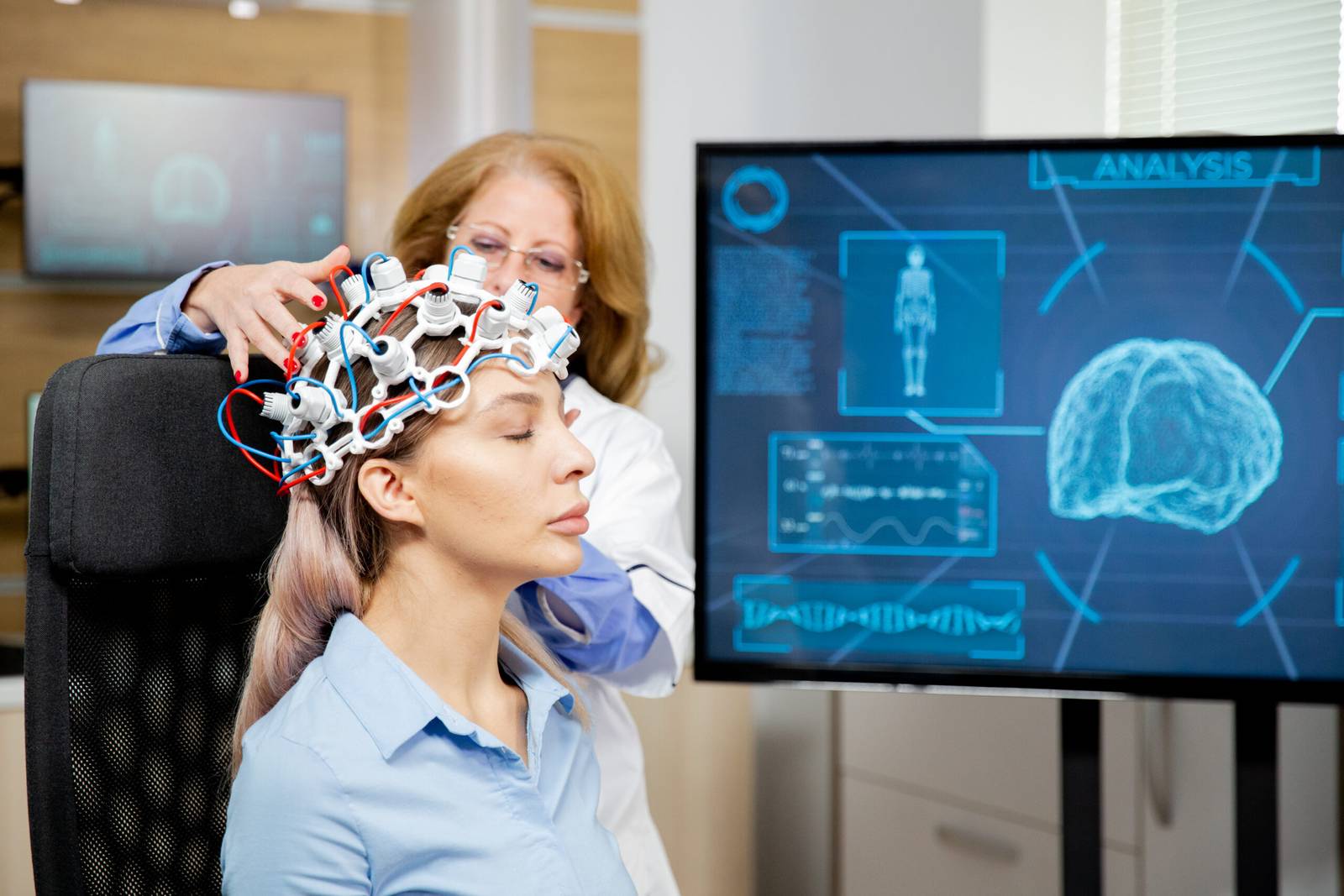Merging Minds: Neurotech & Brain-Computer Interfaces

by Web Digital
In the realm of technological innovation, few frontiers hold as much promise and intrigue as neurotechnology and brain-computer interfaces (BCIs). These cutting-edge fields are pushing the boundaries of what we thought possible, enabling a profound fusion of human cognition and machine capabilities. This article delves into the exciting world of neurotechnology and BCIs, exploring their potential, applications, ethical considerations, and the transformative impact they are poised to have on various aspects of our lives.
Understanding Neurotechnology and BCIs
Neurotechnology refers to the application of principles and techniques from the field of neuroscience to create technologies that interact with and enhance the human nervous system. This encompasses a wide range of innovations, from brain imaging and neural prosthetics to brain-computer interfaces.
Brain-computer interfaces, in particular, are a subset of neurotechnology that bridges the gap between the human brain and external devices or computer systems. BCIs allow direct communication between the brain and machines, enabling thought control of devices and the transfer of information without physical interaction. This groundbreaking technology holds immense potential in various domains.
The Evolution of BCIs
Brain-computer interfaces (BCIs) have made significant progress since their inception. Initially developed for medical applications such as assisting individuals with severe motor disabilities, BCIs have expanded into diverse fields, including gaming, communication, and even art. The development of non-invasive BCIs, which do not require surgery, has made these technologies more accessible and user-friendly.
Applications of Neurotechnology and BCIs
1. Medical Advancements:
BCIs have revolutionized medical treatments by helping individuals with paralysis regain limited mobility and control over their environments.
2. Assistive Technology:
BCIs enable individuals with disabilities to control wheelchairs, communicate, and interact with computers and smart devices using their thoughts.
3. Neurorehabilitation:
BCIs aid in neurorehabilitation by facilitating recovery in stroke patients and those with brain injuries.
4. Enhanced Learning:
Neurotechnology has the potential to improve education by providing insights into cognitive processes, enabling personalized learning experiences, and assisting students with learning disabilities.
5. Neurogaming:
BCIs have entered the realm of gaming, allowing players to control characters and devices using their thoughts and emotions.
6. Communication:
BCIs can provide a means of communication for individuals with locked-in syndrome or other conditions that impede traditional speech.
7. Mind-Controlled Devices:
BCIs enable users to control drones, prosthetic limbs, and other devices through thought alone.
8. Research and Neuroscience:
Neurotechnology has accelerated research in neuroscience, providing tools for brain mapping, understanding cognitive processes, and studying neurological disorders.
Ethical Considerations
While the potential benefits of neurotechnology and BCIs are vast, they also raise ethical concerns:
1. Privacy:
BCIs can potentially access highly personal information from a user’s thoughts. Protecting the privacy and security of neural data is paramount.
2. Informed Consent:
Users must provide informed consent for the use of BCIs, including understanding how their data will be collected, stored, and used.
3. Ownership and Control:
Questions arise regarding who owns and controls the neural data generated by BCIs. Users must have agency over their own thoughts and data.
4. Equality:
Ensuring equal access to neurotechnology and BCIs is crucial to avoid exacerbating social inequalities.
5. Neuroethics:
A new field of neuroethics has emerged to address the ethical challenges posed by neurotechnology and BCIs.
The Future of Neurotechnology and BCIs
The future of neurotechnology and BCIs is teeming with possibilities:
1. Medical Breakthroughs:
BCIs may lead to breakthroughs in treating neurodegenerative diseases like Alzheimer’s and Parkinson’s.
2. Enhanced Cognition:
BCIs could enable cognitive enhancements, potentially boosting memory, learning, and problem-solving abilities.
3. Interconnected Minds:
BCIs may facilitate direct brain-to-brain communication, enabling shared thoughts and experiences among individuals.
4. Consumer Applications:
BCIs may become a part of daily life, controlling smart homes, enhancing virtual reality experiences, and improving productivity.
5. Ethical Frameworks:
Developing robust ethical frameworks will be essential to guide the responsible development and use of BCIs.
6. Neuroeducation:
Neurotechnology may reshape education by tailoring learning experiences to individual brain profiles.
Challenges and Caution
As we embark on this exciting journey of merging minds with machines, it is essential to tread carefully:
1. Safety and Reliability:
Ensuring the safety and reliability of BCIs is paramount, as errors or security breaches could have severe consequences.
2. Ethical Safeguards:
Robust ethical safeguards must be in place to protect the rights, privacy, and agency of users.
3. Accessibility:
Efforts should be made to ensure that neurotechnology and BCIs are accessible to all, regardless of socioeconomic status or disability.
Conclusion
Neurotechnology and brain-computer interfaces represent a remarkable convergence of human ingenuity and scientific understanding. They offer the potential to transform healthcare, education, communication, and more, ushering in a new era of possibilities for human-machine interaction. However, this journey must be guided by ethical considerations, safety precautions, and a commitment to equitable access. As we explore the frontiers of merging minds with machines, we must remain vigilant, ensuring that these remarkable innovations benefit all of humanity and enrich our lives in ways we can only begin to imagine. The future is promising, and it beckons us to embark on this awe-inspiring journey into the human mind and the limitless possibilities of technology.
Recommended Posts

The Role of AI in Canadian Digital Marketing
September 23, 2025

5 Digital Marketing Trends in Canada for 2025
September 23, 2025

Creating a Cohesive Visual Identity for Your Canadian Brand
September 16, 2025
